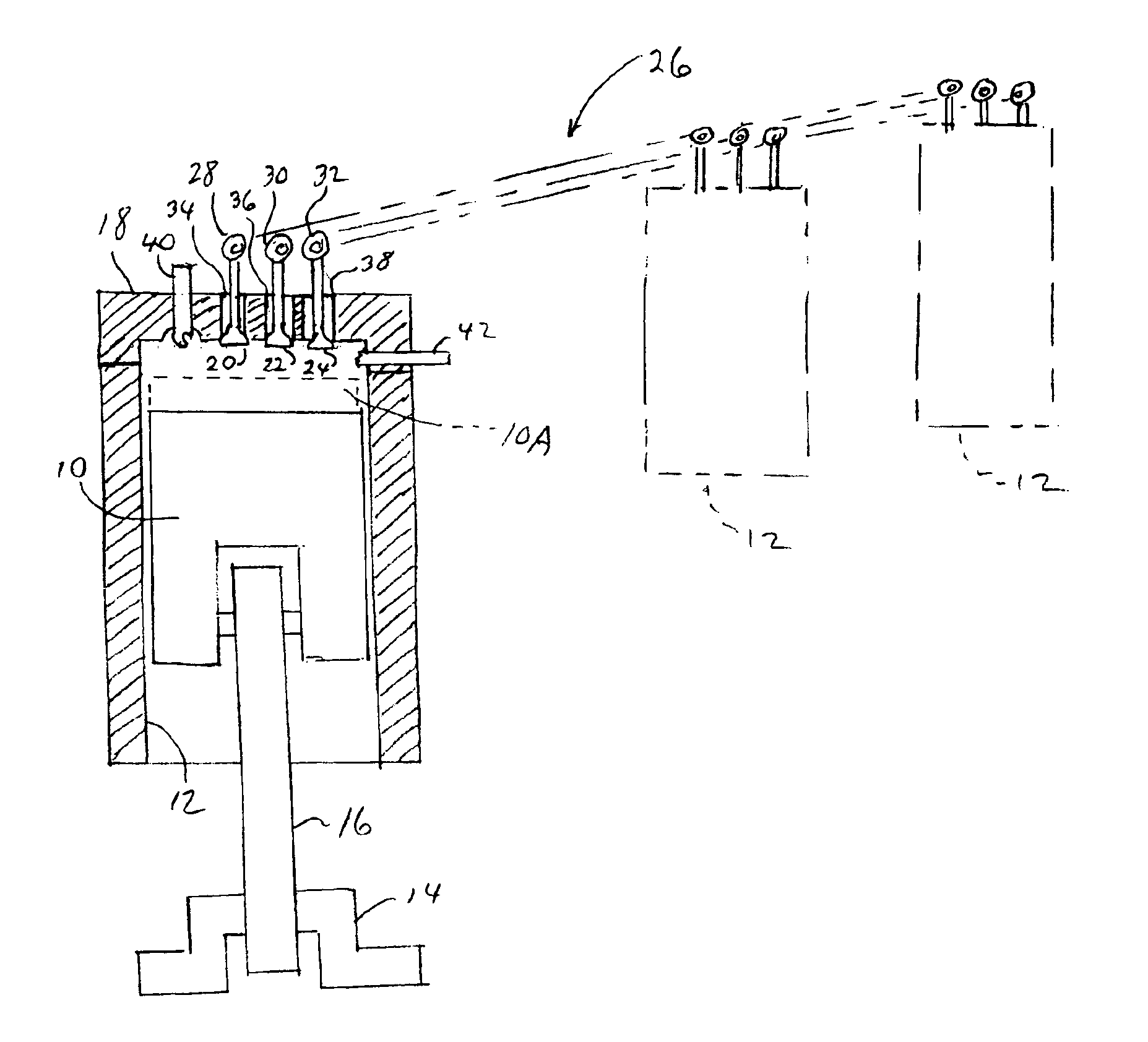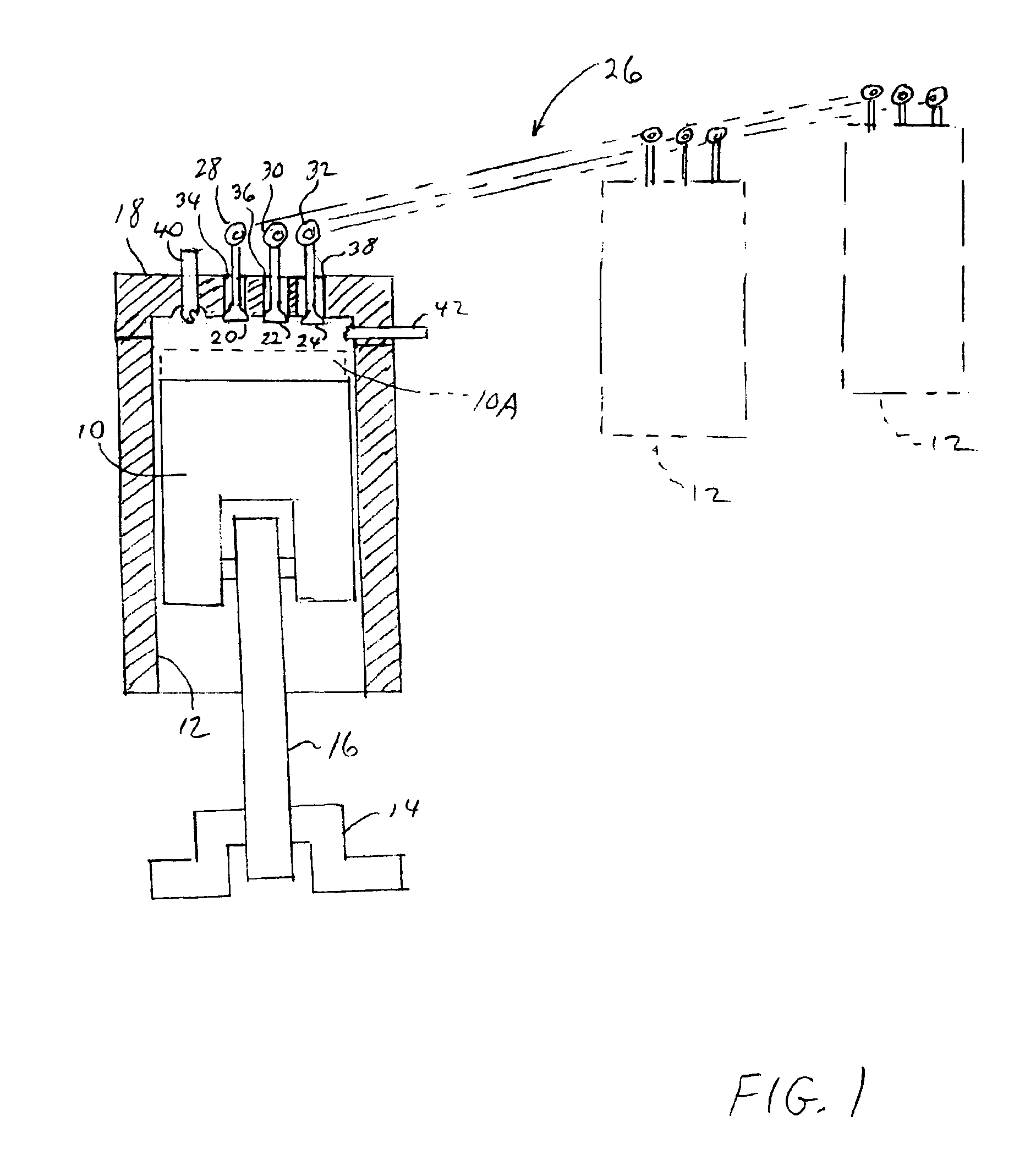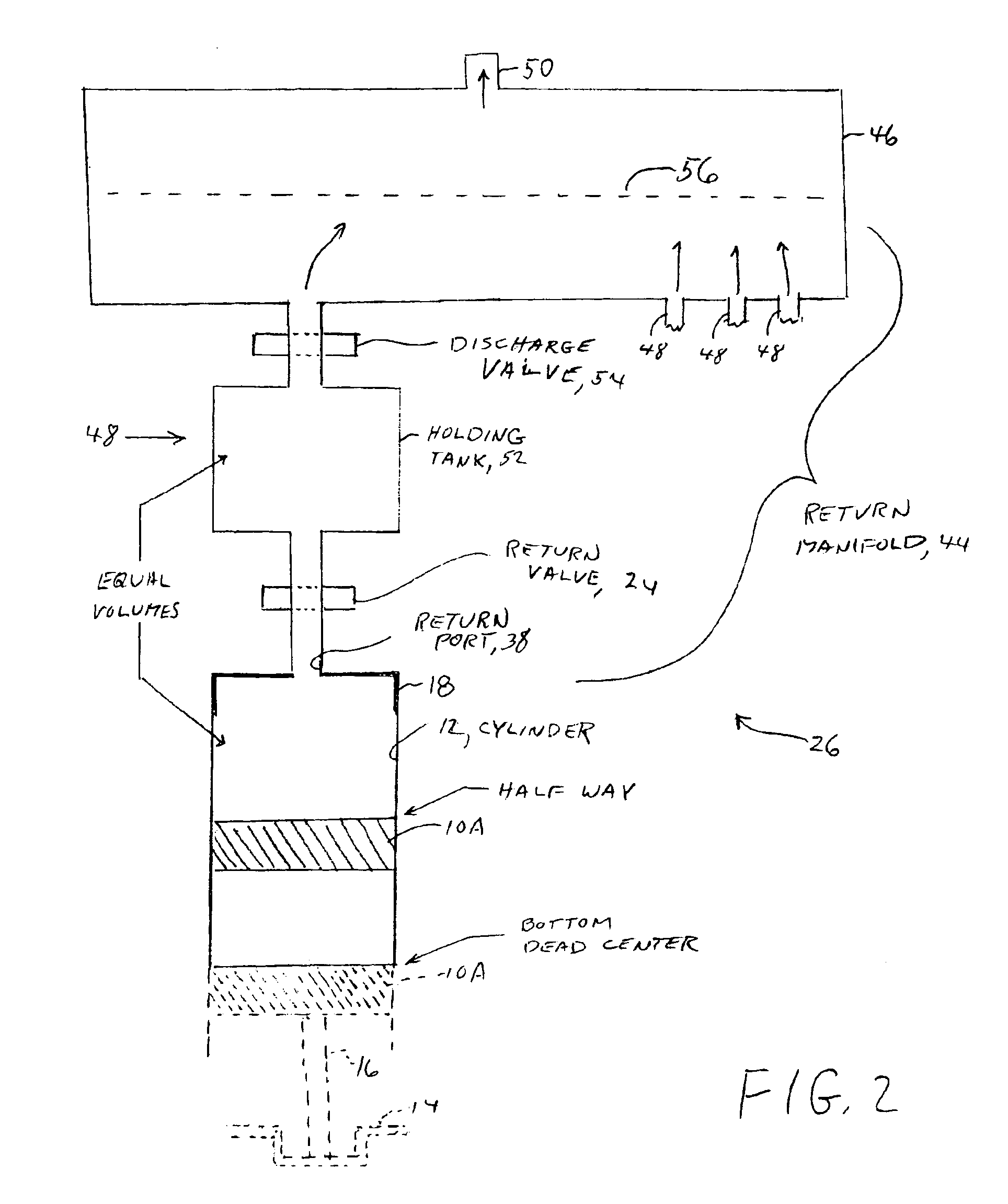Internal combustion engine with elevated expansion ratio
- Summary
- Abstract
- Description
- Claims
- Application Information
AI Technical Summary
Benefits of technology
Problems solved by technology
Method used
Image
Examples
Embodiment Construction
[0022]FIG. 1 shows a diagrammatic view of a piston 10 within its cylinder 12. The piston 10 is driven by a crankshaft 14 and connecting rod 16 with reciprocating motion, wherein the motion of the piston 10 is characterized by a repeating sequence of four strokes, as described above. During the induction stroke and the power (or expansion) stroke, the distance between the piston 10 and a head 18 of the cylinder 12 increases to provide for an increase in the volume of cylinder available for containing gases within the cylinder. During the compression and the exhaust strokes, the distance between the piston 10 and the head 18 decreases to provide for a decrease in the volume of the cylinder available for the containment of gases within the cylinder. The invention provides for the changing of the geometry of the piston 10 relative to the cylinder 12 by increasing the length of the piston 10 to provide for a taller piston 10A as indicated in dashed line. Typically, in the construction of...
PUM
 Login to View More
Login to View More Abstract
Description
Claims
Application Information
 Login to View More
Login to View More - R&D
- Intellectual Property
- Life Sciences
- Materials
- Tech Scout
- Unparalleled Data Quality
- Higher Quality Content
- 60% Fewer Hallucinations
Browse by: Latest US Patents, China's latest patents, Technical Efficacy Thesaurus, Application Domain, Technology Topic, Popular Technical Reports.
© 2025 PatSnap. All rights reserved.Legal|Privacy policy|Modern Slavery Act Transparency Statement|Sitemap|About US| Contact US: help@patsnap.com



